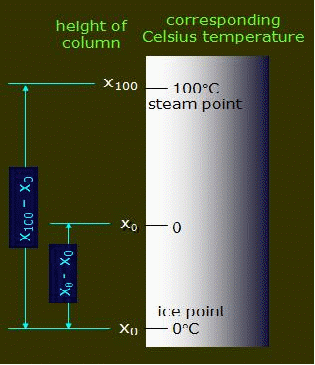Thermometers
Temperature is a measure of how much heat a body contains. It is measured using a thermometer. There are several different types of thermometer. All of them measure temperature, but each one is used over a different temperature range and/or under different conditions,and some are less accurate than others.

If we are to use the thermometer to measure temperature, it must have some physical property that correlates with temperature. Examples include expansion of a column of liquid in a capillary tube –commonly mercury or alcohol
The electrical resistance of platinum wire
The voltage of a thermocouple
The expansion of a bimetallic strip
The pressure of a gas at constant volume An ideal thermometer should have an easy to read – preferably linear - scale
Be safe to use
Sensitive to temperature changes
Be able to measure a wide range of temperatures In any case the thermometer must be calibrated first, so that a specific reading of the physical property indicates a specific temperature. Usually two fixed points are chosen which are always the same under given conditions so can be reliably produced. The Celsius scale for example, has fixed points at the temperature of pure melting ice at atmospheric pressure, which is assigned a temperature of 0°C and at the temperature at which boiling water changes into steam at standard atmospheric pressure, assigned a value of 100°C.Next, the interval between the fixed points is divided into 100 equal divisions for easy reading. Each reading is 1 degree Celsius (°C)
Note the height of mercury in the tube at the ice point, call this x-0 , and the steam point, call this x-{100} .
For any height x of the mercury, the corresponding Celsius temperature![]() is given by
is given by![]()
The Kelvin or Absolute Scale

The Kelvin scale has its zero at absolute zero.
This is the lowest temperature that any substance can reach.
Absolute zero corresponds with –273°C on the Celsius scale![]()
Thermocouples
Thermocouples consist of two wires of different metals joined together at the end to form two junctions
If the junctions are at different temperatures, a voltage is produced. The larger the temperature difference, the larger the voltage produced. Thermocouples are suitable for measuring wide temperature differences, which vary rapidly due to its quick response and the temperature at a point as the wire junctions are very small. The temperature range depends on the two metals used for the wires. They can operate over a very wide range of temperatures from –200°C to 1700°C. To produce a larger voltage, several thermocouples are connected in series (thermopiles)to increase the sensitivity of the instrument.